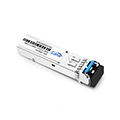Fiber optic patch cords, serving as crucial jumpers connecting equipment to fiber optic cabling links, are widely used in various fields such as fiber optic communication systems, fiber optic access networks, fiber optic data transmission, and local area networks. Among the classifications of fiber optic patch cords, we often hear about telecom-grade and network-grade patch cords. So, what are the differences between these two types? Let's delve into a detailed understanding.

The difference between telecom-grade fiber jumpers and network-grade fiber jumpers:

The difference between telecom-grade fiber jumpers and network-grade fiber jumpers:
Network-grade fiber jumpers are slightly inferior compared to telecom-grade jumpers, primarily due to higher attenuation levels. Since network-grade jumpers have lower performance requirements, data packet loss may occur during transmission, with attenuation typically greater than 0.3dB.
In contrast, telecom-grade fiber jumpers demonstrate superior performance. With lower attenuation, data transmission is more stable, significantly reducing the likelihood of data loss. For example, major institutions such as China Netcom, Mobile, Unicom, and Nokia use telecom-grade fiber jumpers on servers to ensure efficient and stable data transmission.
1. In terms of attenuation, telecom-grade fiber jumpers have lower attenuation compared to network-grade fiber jumpers, meaning they are more stable during data transmission and less prone to data loss.


2. There are also differences in manufacturing processes between telecom-grade and network-grade fiber jumpers. Telecom-grade fiber jumpers typically undergo 5 polishing processes, while network-grade fiber jumpers undergo 4. This difference in polishing processes also affects their performance to some extent.


3. Due to differences in manufacturing processes and performance requirements, the market price of telecom-grade fiber jumpers is usually slightly higher than that of network-grade fiber jumpers. However, considering their more stable data transmission capability and lower attenuation, the market price is slightly higher than that of network-grade fiber jumpers.
In simple terms, telecom-grade jumpers are much better than network-grade jumpers because they have lower attenuation, making data loss less likely. Network-grade jumpers are slightly inferior to telecom-grade ones, simply put, because they have higher attenuation.












































































 Ann
Ann












